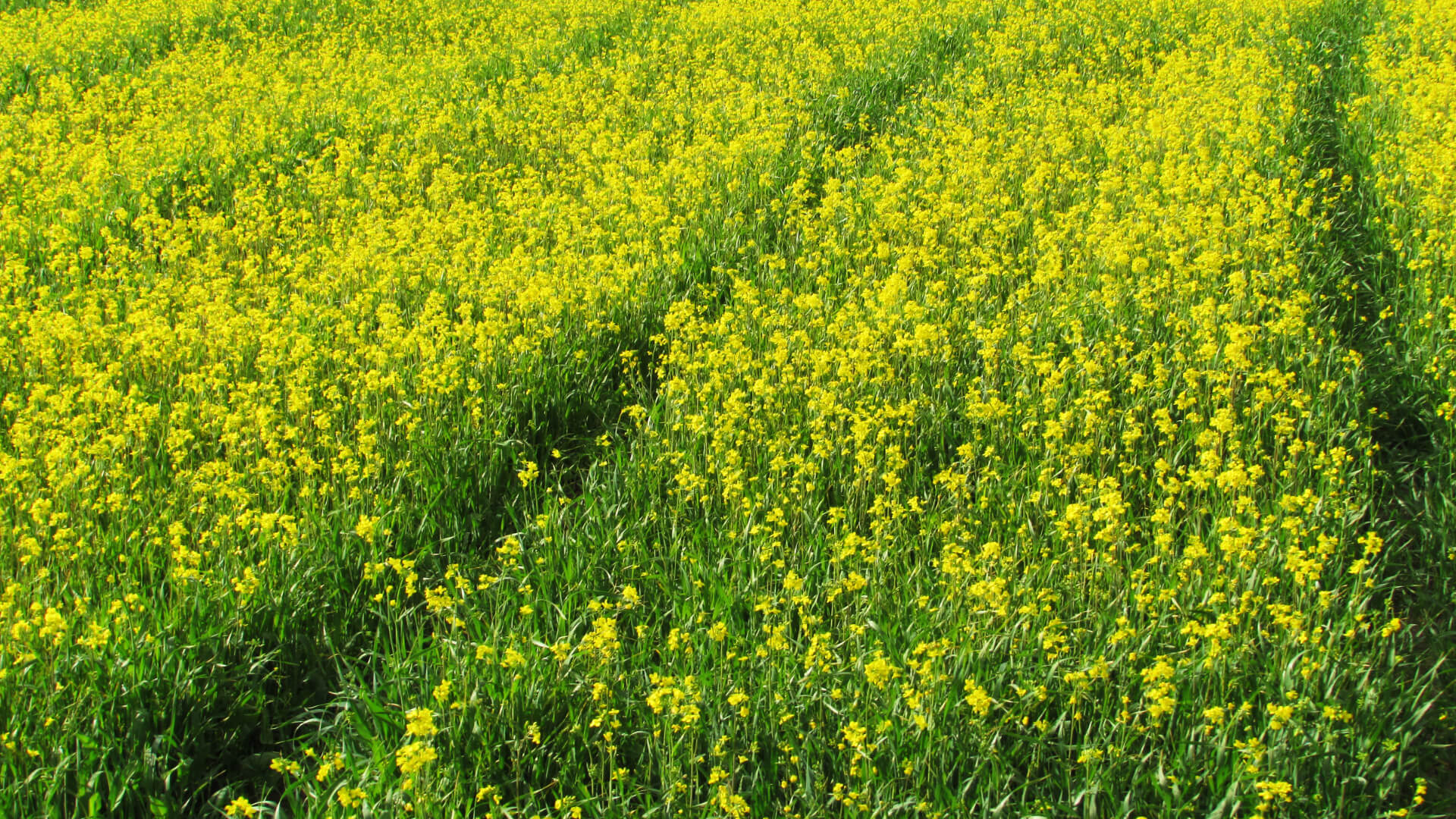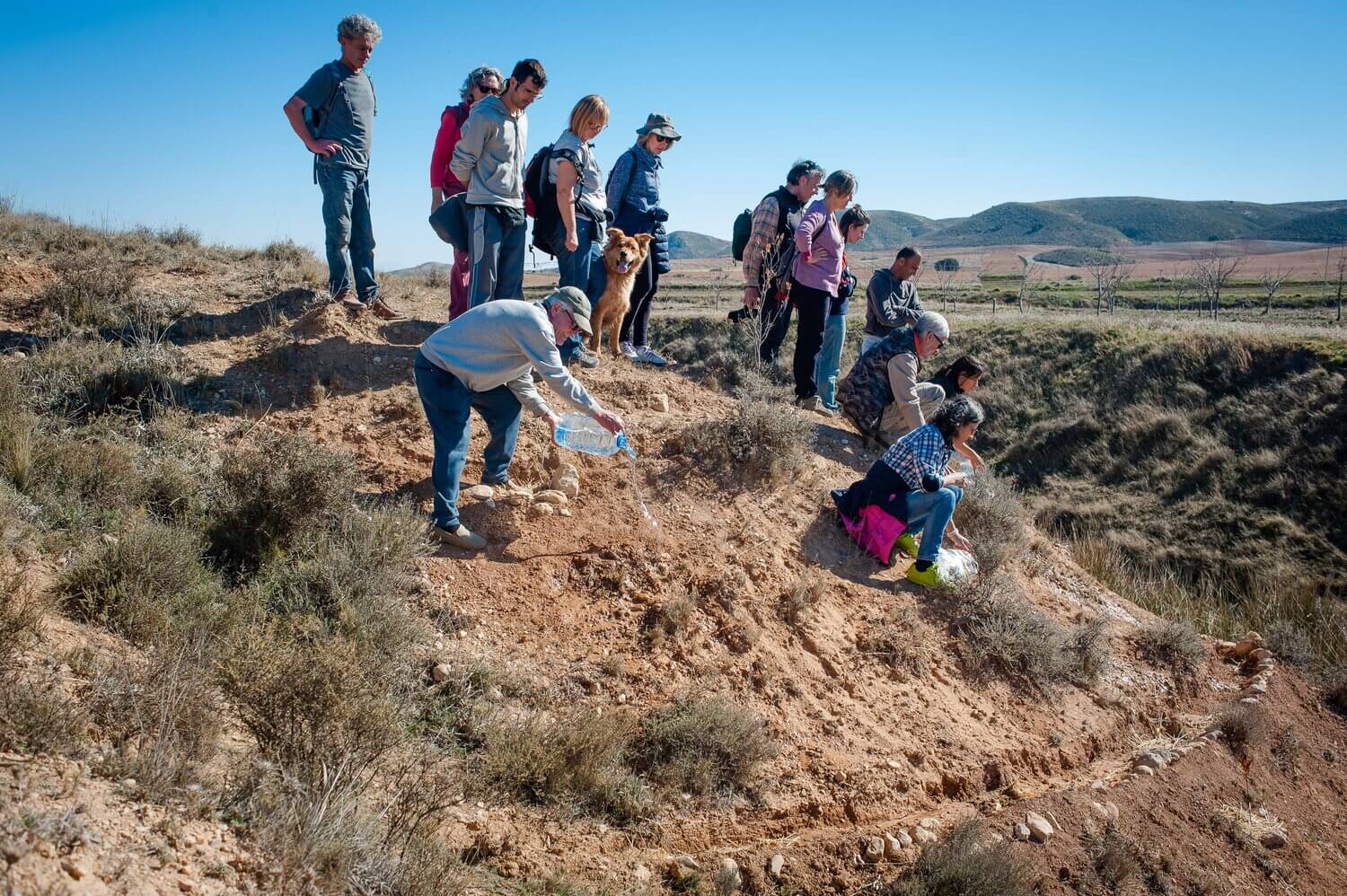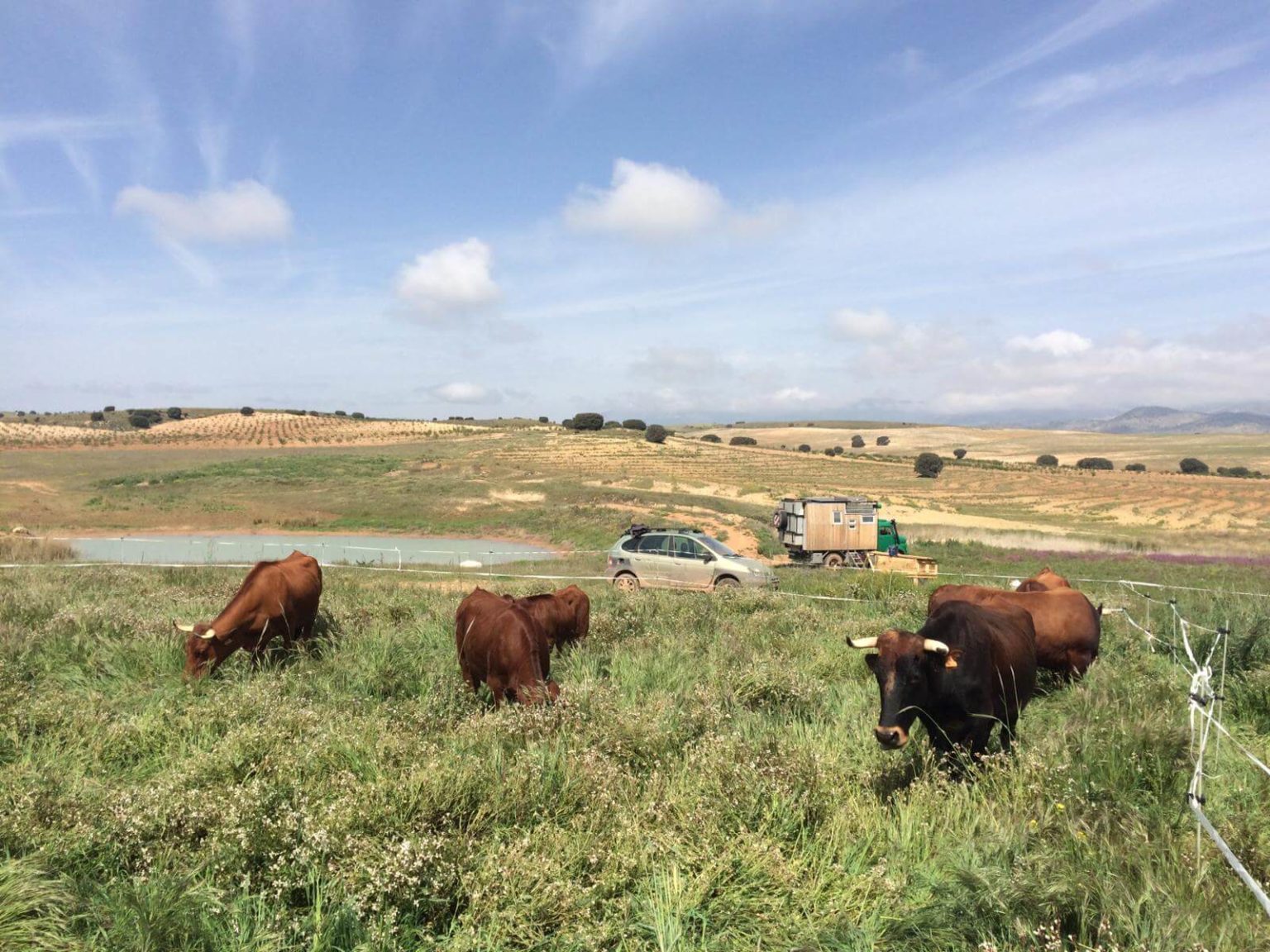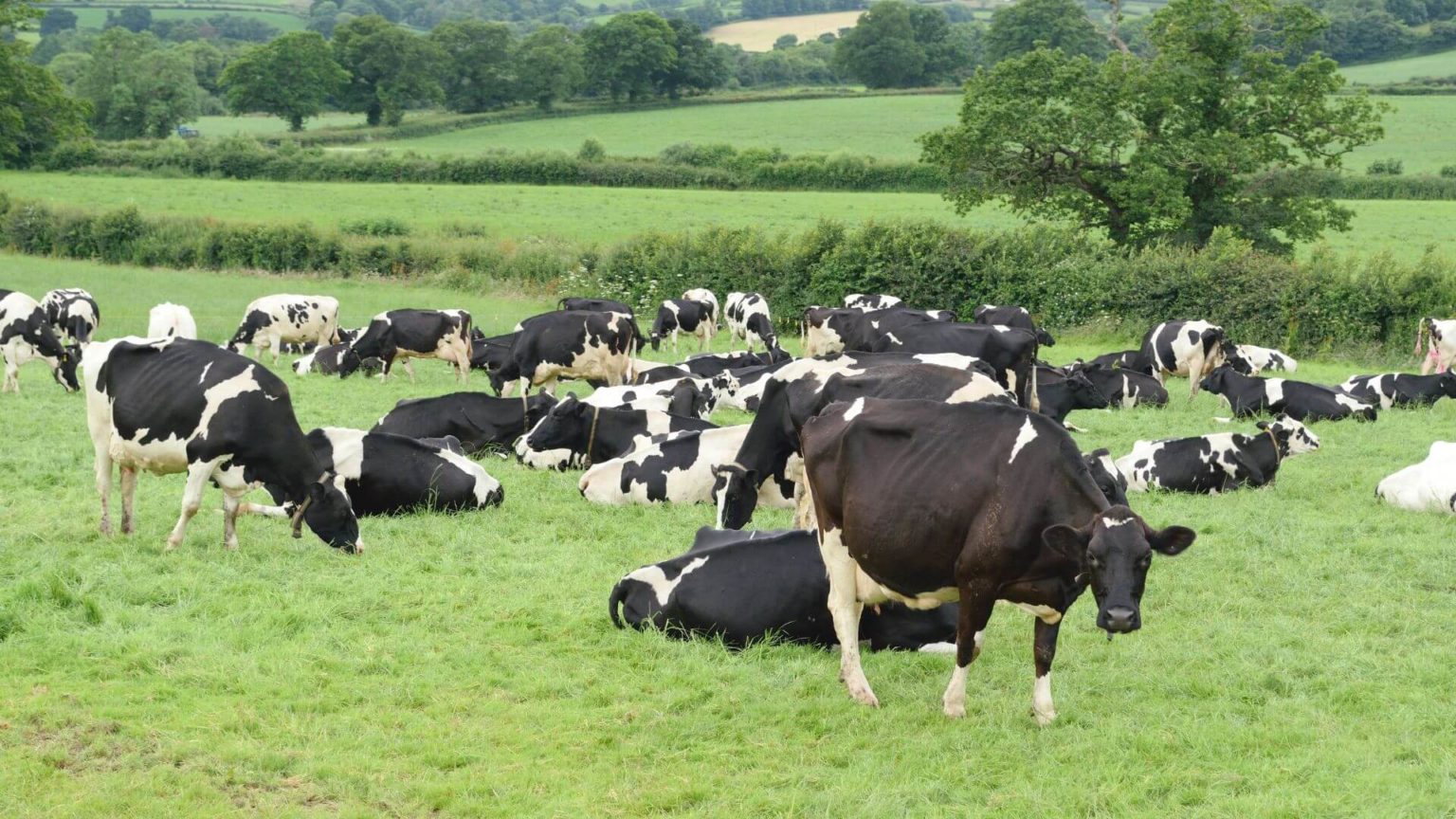Author: Athena Fosler-Brazil, REVOLVE
Regenerative agriculture offers an alternative to carbon-intensive farming and can deliver more resilient food systems.
Look out the window of a train traveling through the French countryside, and there’s a good chance you’ll be gazing out over fields of wheat. Drive through rural Missouri, and miles of soybeans and corn will flank the interstate. Most of us are accustomed to these views: homogeneous fields of one or two crops, perhaps broken up by patches of forest but generally uniform over countless acres.
Monoculture, the practice of repeatedly planting one crop in a large area, took over agriculture in the 1940s as farming technology advanced and farmers began producing for an increasingly globalized market. Monoculture allows farmers to specialize their production and maximize their yields. But it’s well known that this practice comes with significant downsides: soil degradation, lower crop resiliency and increased dependency on pesticides, herbicides, and fertilizers, all of which have long-lasting environmental impacts.
Regenerative agriculture offers an alternative.
In the midst of an international push to implement sustainable solutions to carbon-intensive practices, the European Green Deal’s Farm to Fork strategy has set ambitious goals to reduce pollution from the agricultural sector. Regenerative practices are more relevant than ever as farmers find ways to adjust.

What is regenerative agriculture?
In contrast to conventional modern agricultural practices, regenerative agriculture focuses on improving soil health through principles based in ecological processes. As the name implies, at its core regeneration is about replenishing degraded soil– restoring life to the earth instead of simply extracting it, and ultimately having a positive impact on the land.
At its core regeneration is about replenishing degraded soil– restoring life to the earth instead of simply extracting it.
The Noble Research Institute defines four interconnected ecological processes that inform regenerative agriculture: the water cycle, energy flow (sunlight), the nutrient cycle and community dynamics, which encompass changes in a plant, animal, or microbial community over time.
Regenerative farmers view their farms as ecosystems that are most resilient when they work in harmony with these processes. To do so, farmers will often employ a number of techniques like planting nitrogen-fixing ground cover, which acts as a “living mulch”, applying compost, planting hedges as borders between fields, using a no or low-till approach and diversifying the crops cultivated on a piece of land, all of which aid in soil health.
Fertile topsoil is vital to a productive harvest, but it’s also inextricably linked to efficient water management, biodiversity, and the overall health of the ecosystem.


Clara Behr is Head of Policy and Public Relations at the Biodynamic Federation Demeter International, one of the predominant organic certifiers and the largest biodynamic agriculture certifier. Biodynamics is a holistic agricultural approach that has regeneration as one of its core tenants.
“Good soil is the beginning for everything,” Behr said. “It ensures good quality products and livelihoods of farmers, but also contributes to climate change mitigation and preserving our nature and our environment.”
Soil that is rich in microorganisms has more potential to sequester carbon from the atmosphere. This is also the principle that underlies cover cropping. The more time soil spends growing diverse crops, the more carbon can be sequestered and nutrients returned to the soil. In turn, healthier soil can grow more crops, and the cycle reinforces itself.
Over time, organic regeneration can lead to lessened or no dependence on chemical fertilizers and pesticides, which are harmful to water quality and biodiversity. Organically farmed land has 30% more biodiversity than conventionally farmed land, and a central goal of the Farm to Fork strategy is a 50% reduction in the use and risk of pesticides by 2030.
The Biodynamic Federation has 47 partners in 36 countries, and Behr said interest in the organization grows every year, including in countries facing climatic and political stressors, like Egypt and Ukraine.
“Farmers [in Ukraine] don’t have any access to chemical pesticides or fertilizers and they need to grow food to feed their population, despite the war,” Behr said. Regeneration offers an agricultural model that doesn’t rely on agrochemicals, ultimately leading to a more resilient food system. Less reliance on agrochemicals also translates to lower input costs in the long run.
Healthy soil and water management
On La Junquera Farm in southern Spain, Regeneration Academy employs regenerative techniques and holds educational workshops to teach both local youth and international students and visitors about regeneration. The 1,100-hectare farm is in a semi-arid, hilly environment that receives very little rain.


Yanniek Schoonhoven, a trainer and international project manager for Regeneration Academy, explained that the area faces challenges with rainwater infiltration, erosion, and poor soil health.
“We have a lot of erosion because of intensive tilling and past land management. That means we have very little topsoil, and that’s what we’re trying to improve,” Schoonhoven said. “If your organic matter in the soil improves, the rain has a greater chance of being taken up by the soil because it acts as a sponge.”
Developing healthy topsoil facilitates rainwater infiltration, which is important for both farming and underground aquifer replenishment. In arid climates, maximizing water retention in the soil is key.
La Junquera Farm also has ponds and swales– small canals between plots of land– that collect the little rainwater they receive and create small wetland environments, which aid in soil moisture. Amongst other things, the farm grows almond trees without any additional irrigation. In California, which produces 83% of the global almond supply, growing a single almond kernel uses 12 liters of water.
Regeneration and animal husbandry
Regeneration isn’t just relevant to farmers growing crops but can be applied to animal husbandry operations as well. Part of the Pasture-Fed Livestock Association, Pasture for Life is the leading certifier for 100% grass and pasture-fed ruminant meat and dairy in the UK. Regenerative practices are at the heart of Pasture for Life-certified farms.
Nikki Yoxall, Head of Research at Pasture for Life, explained that raising cattle on pasture or cover crops is not only better for animal welfare, but also for the environment, as grasslands help sequester carbon and grazing animals return nutrients to the soil.
“Grasslands and large herbivores coevolved, so to maintain diverse grasslands that are able to store carbon and cycle water, you have to have large herbivores,” Yoxall said. This holistic view of farms as ecosystems is central to regeneration.


Relying on pasture to feed ruminants also facilitates more efficient land management. Globally, 33% of croplands are used for livestock feed production. Yoxall explained that Pasture for Life thinks cropland should be used to feed monogastric animals that cannot subsist on grass.
“Let’s keep our ruminants eating what they were evolved to eat, which is grass, pasture, cover crops, rather than using productive land to produce what could be human food and then feeding it to animals that don’t need it,” she said.
“Grasslands and large herbivores coevolved, so to maintain diverse grasslands that are able to store carbon and cycle water, you have to have large herbivores.”
Nikki Yoxall, Head of Research - Pastures for Life
There is also a significant economic incentive to transition toward pasture-raised meat, as lessening dependence on feed means lower input costs in the face of rising feed prices. Certified meat and dairy also attract a premium, which means farmers can earn more per kilo of meat.
Long-term investment for long-term change
Commonland is a not-for-profit organization that partners with groups across 20 countries to tackle large-scale, long-term landscape restoration projects. Commonland has aided in the restoration of 30,400 hectares of land, including agricultural areas.
Willelmijn de Iongh is a landscape developer with Commonland, and she emphasized that a more sustainable food system will require a rebalancing of local and international markets.
“There’s a huge opportunity for a new wave of agriculture to become a little bit more regionalized within a global food system,” de Iongh said. “Of course, you’re going to have global trading, but make it a bit more balanced.”
Moving toward regeneration means moving away from the agro-industrial complex that controls the food system along every step of the chain. Agrochemical companies, feed producers and corporate grocery stores all shape the market, and regeneration represents a radical deviation from the norm.


“There’s a fear from farmers that if they shift and change the system, they’re going to lose that control and they won’t be able to meet the market demand, which is actually not driven by consumers but is driven by monopolies and oligopolies and the commodified food system actors,” Yoxall said.
Farmers need financial assistance to support them in this change. De Iongh said this means increased transition finance and a change in expectations from large capital investors.
“You need a large amount of capital to also take that leap and be a little more flexible in how quick and how high the return on investment needs to be,” she said. Return on investment will not be as high as it would be from a conventional farm, but there is a limit to how much can continue to be grown from degraded soil.
Schoonhoven said this is the same dichotomy farmers face in water-scarce regions. More irrigation might mean a larger harvest, but there’s a limit to the resources, and farmers are already seeing their water supplies dry up.
“You took out fast money, but then that’s it, that land is useless,” Schoonhoven said. “You basically desertified your land in ten years for fast money.”
De Iongh emphasized that not-for-profits often depend on project finance that typically only lasts three to five years, which isn’t nearly enough time to see real change in an ecological system. Commonland operates under a 20-year timeframe, which is the timescale necessary to see real systems change.
“You took out fast money, but then that’s it, that land is useless. You basically desertified your land in ten years for fast money.”
Yanniek Schoonhoven, International Project Manager - Regeneration Academy
Regenerative agriculture is not new, and it doesn’t necessarily require investment in any new technology. It’s a turn away from the agro-industrial processes that farmers have relied upon for the past half century and that have steadily degraded the land they rely on. The transition will undoubtedly take time and will look different for each farmer.
“It’s not going to be uniform, and that’s a good thing,” de Iongh said. “We should celebrate that.”
This article was first published by REVOLVE.

